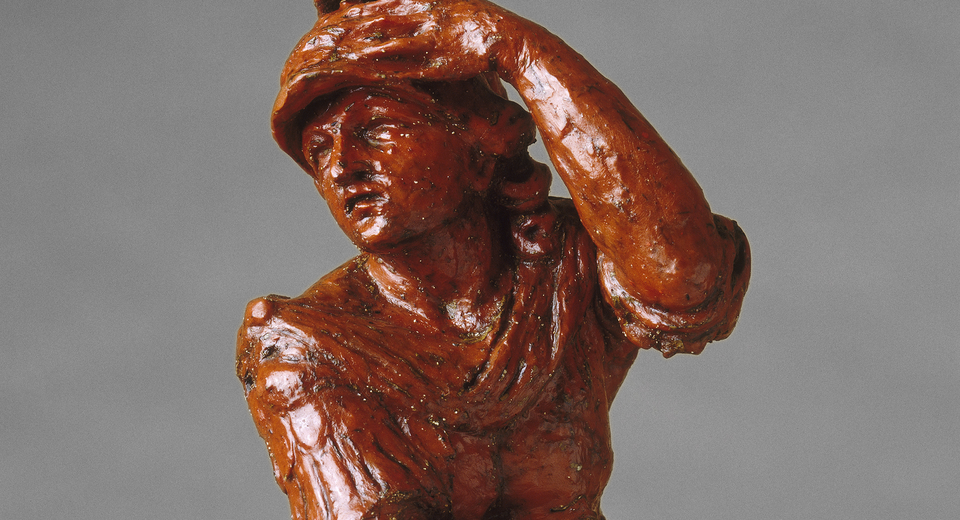Roman soldier. Project for a figurehead for the ship l'intrepide
Paris
Red wax, black-painted wooden stand
Very few preparatory works, especially those from the 18th century, have survived to the present day. By definition transitory, and therefore ephemeral, they were made from materials considered less than noble - in this case wax, sometimes raw clay. Sporadically, their preservation could only be ensured by a workshop tradition, an honourable paternity, or a fortunate chance linked to the constitution of a collection. This Roman soldier owes its presence in the museum to all of these factors.
Sculpting in Brest's 18th-century arsenal
Between the end of the 17th and the middle of the 19th century, Brest's arsenal had a sculpture workshop run by its first master sculptor. Between 1729 and 1766, it was Charles-Philippe Caffiéri who held this position and who infused his baroque talent into the creations emanating from the workshop. Jacques-Etienne Collet, a figurative sculptor at the arsenal, probably worked with him on this wax figurehead project, following his drawings and instructions.
This type of small-scale figurine is quick and easy to model, and is sometimes reinforced with metal frames. This is an intermediate stage that facilitates the execution of the final sculpture, with its colossal dimensions, by providing a certain number of reference points. These objects have rarely been preserved, and their fragility has made them particularly sensitive to the vagaries of time.
A warrior for L'Intrépide
The process of creating the figureheads enabled the iconography to be validated and shaped in several stages, moving from a two-dimensional drawing to a three-dimensional sculpture. At each stage, the representatives of the powers that be can ensure that the result conforms to the commission, which is important for these highly symbolic ornaments. Here, the Roman warrior in armour, holding his left hand to his helmet, is intended to evoke the courage and daring of the officers commanding the warships, as honoured by the name of the ship, built in Brest and launched in 1747.
The ornamentation of ships dates back to Antiquity and has never been limited to a purely decorative purpose. From the modern era until its disappearance in the 19th century, it was the vector of a political imagination. Under Louis XIV, it served the monarchy. With the French Revolution, the ships revealed a new republican identity, and the allegorical register was renewed. The Empire also reappropriated ancient symbols such as the eagle. The Restoration and then the Second Empire turned to great historical figures, anxious to establish their legitimacy in an era marked by political upheaval.
Collection highlight
Discover the must-see works at the Musée national de la Marine.

